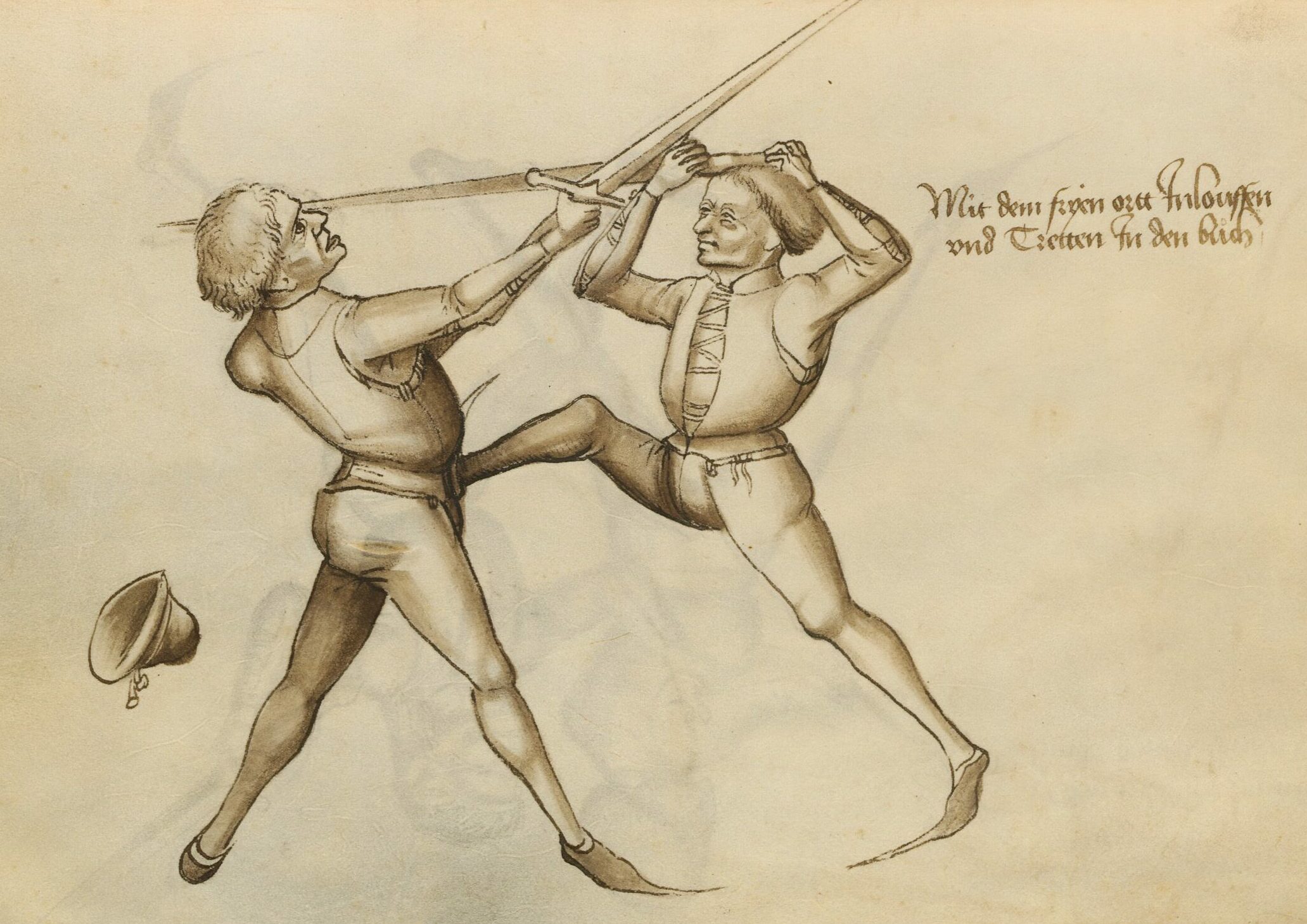
https://www.digitale-sammlungen.de/view/bsb00020451?page=16 (CC BY-NC-SA 4.0)
Project description (DFG – Project number 465466524)
Fighting is a key part of human interaction and is omnipresent in medieval texts and images. On the one hand, fighting occurred as a concrete action during violent encounters in wars, feuds, and duels. The ephemeral practice is itself, however, only indirectly documented through material traces such as osteoarchaeological remains or surviving artefacts like arms and armour. On the other hand, fighting is one of the most symbolically charged human actions; descriptions of fighting are central to many religious, historiographic, and literary texts, while depictions of fighting constitute an important motif in the field of visual arts. Normed, agonistic, and competitive fighting, distinct from violent modes of combat in the narrower sense, played an equally important role in the field of medieval embodied practices and cultures of leisure and exercise.
Fight books emerged as part of this context in the Late Middle Ages as a new literary genre that linked descriptions and depictions of fighting to the concrete practice. From the early fourteenth century onwards, masters of arms began to describe their embodied knowledge and their didactics on wrestling and the use of various weapons in often richly illuminated manuscripts. These treatises that establish fighting as an object of knowledge are the first systematic documentations of medieval body techniques. They made their way into print at the very beginning of the sixteenth century and became a landmark in medieval and early modern movement notation. In a way, these treatises are the direct precursors to our modern day advisory literature on various sports and movement systems. They have so far, however, never been treated comprehensively from the perspective of cultural history.
This project thus approaches the fight book corpus of manuscripts and printed works from the fourteenth to the sixteenth century in combination with complementary sources from the perspectives of
(1) discourse and media analysis,
(2) praxeography, and
(3) cultural theory.
Of key importance is the analysis of these treatises as part of an educational context in which fighting as a subjectively experienced practice became the object of an expert discourse dominated by fencing masters. This development was part of a professionalisation process during the Late Middle Ages that also involved the establishment of guild-like structures such as fencing fraternities within the Holy Roman Empire. The popularity of public fencing schools and competitions also underlines the importance of these phenomena. The scientific objective of the project is to thus analyse the complex relationship between palpable fighting practices and their translation into discourses, media, and didactics from a perspective of cultural history and with a focus on the urban space as a productive centre of fighting knowledge.
Contact
- Dr. Eric Burkart, Mittelalterliche Geschichte, Universität Trier
burkarte@uni-trier.de